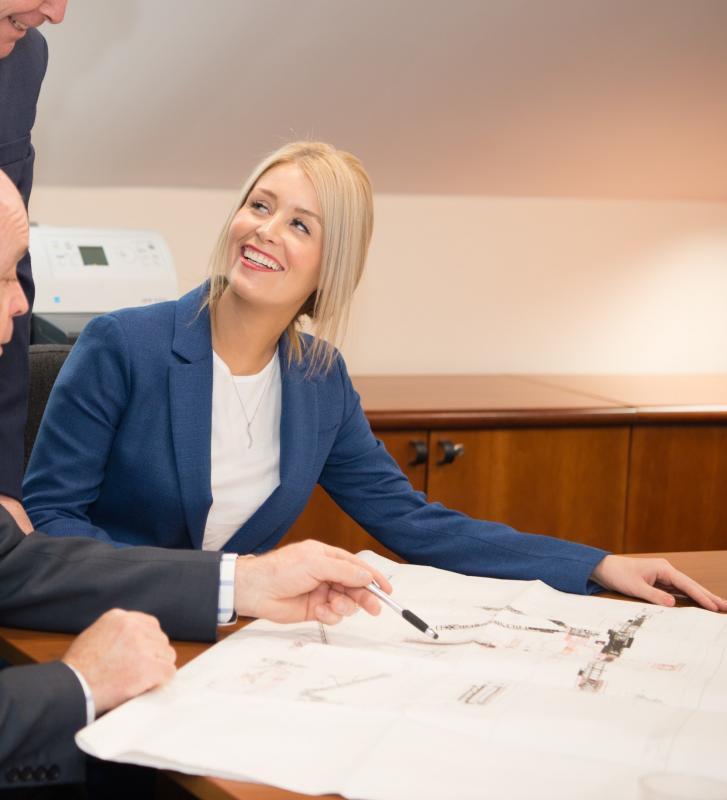
By Tara Sheehan, Finance director of the Sheehan Group:
Amongst the tranquil open fields of Oxfordshire lies an increasingly important economy that is attracting national attention. And rightly so.
The emergence of the Science and Technology Sector in the county is inspired by - and inspiring - developments that help to sustain and grow the local economy. Through innovation, improvements in the quality of life of future generations can be attained, underpinned by an awareness of sustainability.
We are truly living in fast-changing times, driven by our desire and need to improve how we use the Earth’s limited resources. Many of the new innovations coming out of Oxford will support improved global sustainability. For example; driverless cars. Climate change, a topic that is almost eclipsing Brexit in newsworthiness at the present time, is also on the political agenda locally with initiatives ranging from the Zero Emission Zone to low carbon hubs.
There are many challenges that humanity faces to improve the use of limited resources, such as ‘recycling’ materials instead of further eroding those naturally available. The ‘Circular Driven Economy’ is such a concept that enables building matter to be given a new lease of life.
At the Sheehan Group, we re-purpose construction waste and recycle it at our advanced recycling plant in Stanton Harcourt to produce high-quality construction products that can be re-used locally. We wash construction and demolition waste and produce fresh certified aggregates, sand and concrete. The water used in the process is used in a closed loop and recycled, with a reservoir built-up of rainwater providing a top-up.
This development was made possible following our multi-million-pound investment in a CDE Global wet processing plant. In the first seven years of operation it saved 775,000 tonnes of construction and demolition (C&D) waste from landfill, by reprocessing it into recycled aggregates. To visualise the 775,000 tonnes of waste saved from landfill, it is the equivalent of 1,700 Boeing 747 planes at maximum take-off weight.
It is the only recycling plant of its kind in Oxfordshire.
Half of the reusable material is used in our own construction projects and the rest is sold to contractors via a ‘Considerate Constructors Scheme’. We have used our recycled materials in numerous high-end developments at stately homes and University of Oxford buildings via John Sheehan (Oxford) Ltd, our civil engineering company.
The waste is all predominantly gathered, recycled and re-used in Oxfordshire, meaning C02 emissions from long transport routes are significantly reduced. We invested in this model to safeguard our business for the future and as part of our commitment to sustainable construction. More broadly we are committed to making our HQ carbon neutral, via solar panels and a biomass boiler and investing in a fleet of electrical vehicles.
The Circular Driven Economy is still in its relative infancy in the construction industry, but it is vital for the overall sustainability of our environment. We have helped put Oxfordshire on the map in this regard; last year more than 100 international recycling delegates visited our plant in Stanton Harcourt as part of the Circular Economy Symposium. Guests came from as far afield as America, India, Norway and France.
It is reassuring that a key component of the Oxfordshire Local Industrial Strategy is to create ‘more prosperous communities’ via ‘clean and sustainable growth’ and by ‘harnessing the power of innovation.’ We have been championing clean growth locally for more than a decade. It has helped drive Sustainable Urban Development and created local jobs for local people.
Achieving the required planning consents to develop recycling in Oxfordshire and support a clean and sustainable local economy has involved overcoming numerous hurdles and continues to be one of the main barriers to the timely implementation of further gains in our efforts to increase recycling levels.
Construction will continue to play a major role in supporting the economic growth of Oxfordshire and the delivery of the strategy. We hope that with such innovative companies driving growth that the Circular Driven Economy philosophy will be embraced as demand for more business parks increases to accommodate them.
The Oxfordshire Local Industrial Strategy provides an inspiring vision for the county. It is wholly achievable if everyone works together. Wouldn’t it be great if the driverless cars of the future drove past those tranquil open fields and into their new business parks on roads built with recycled aggregate made in Oxfordshire.




